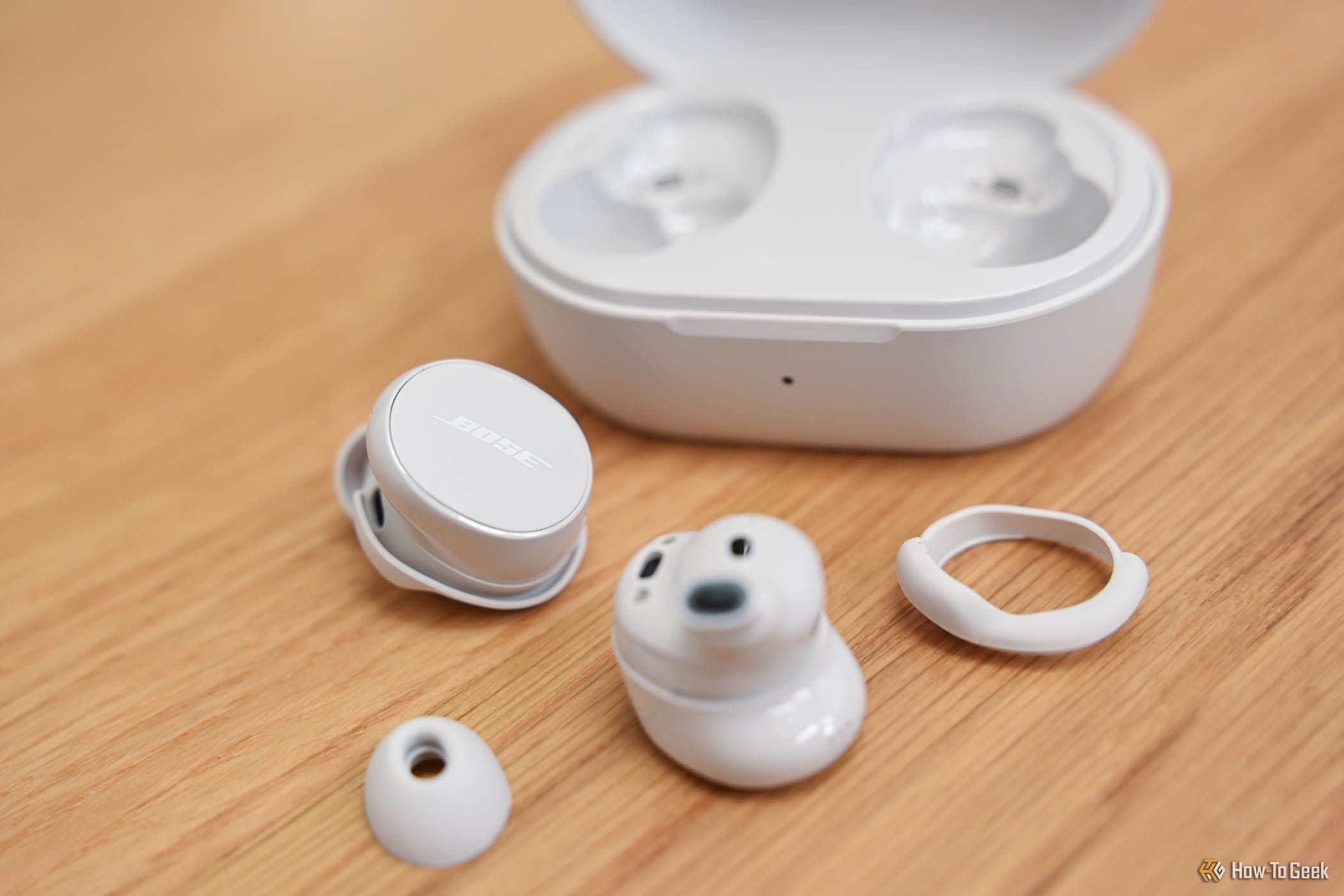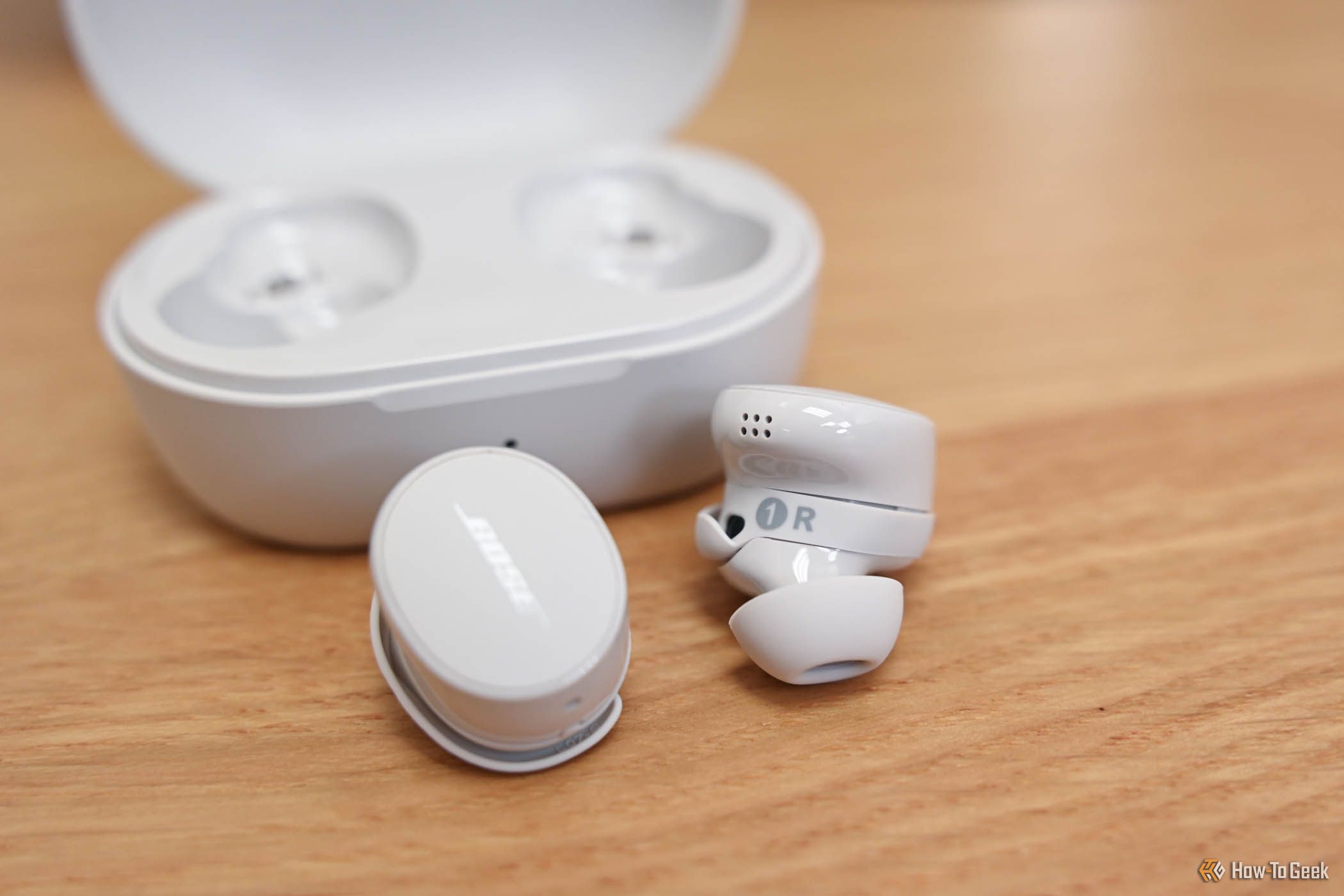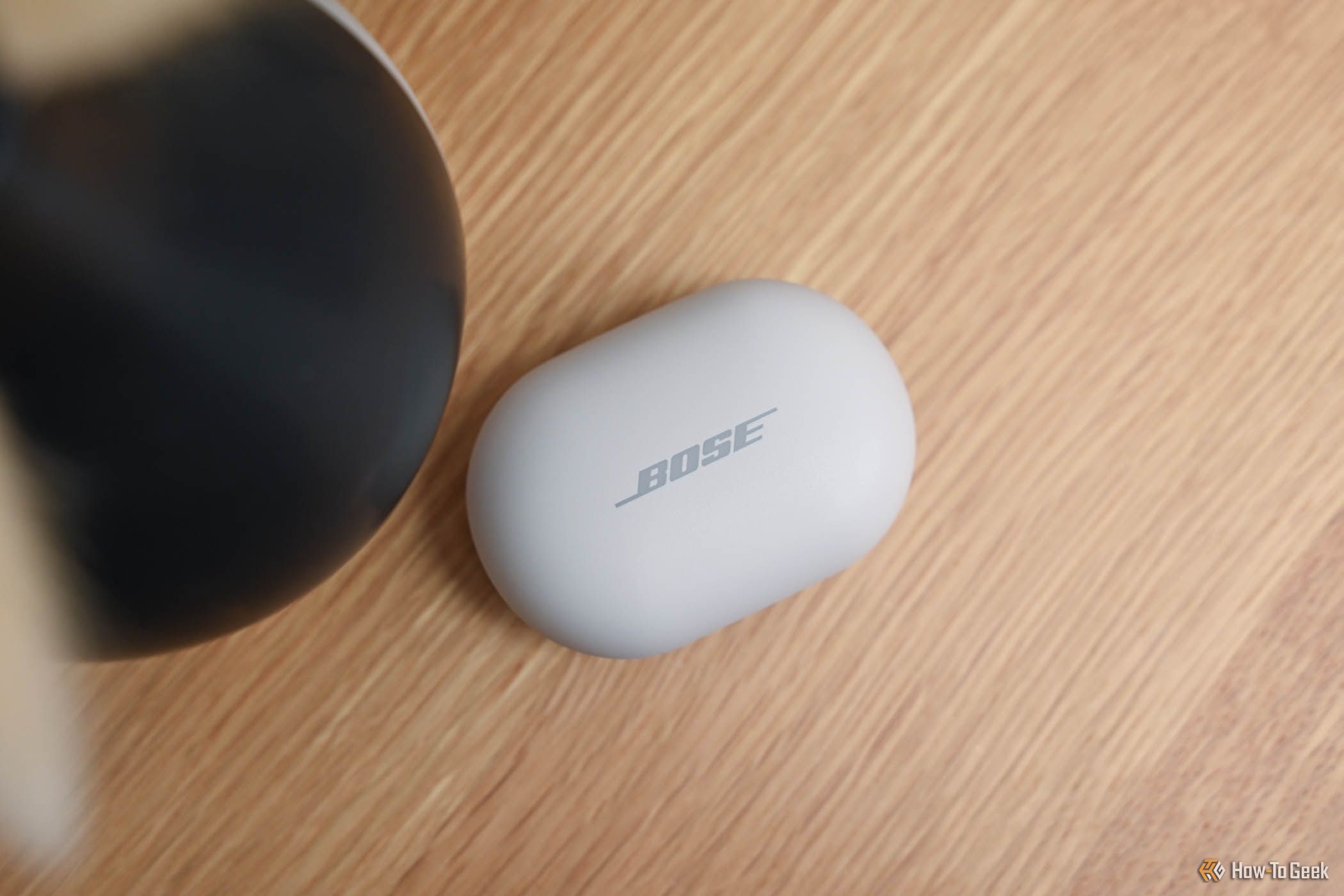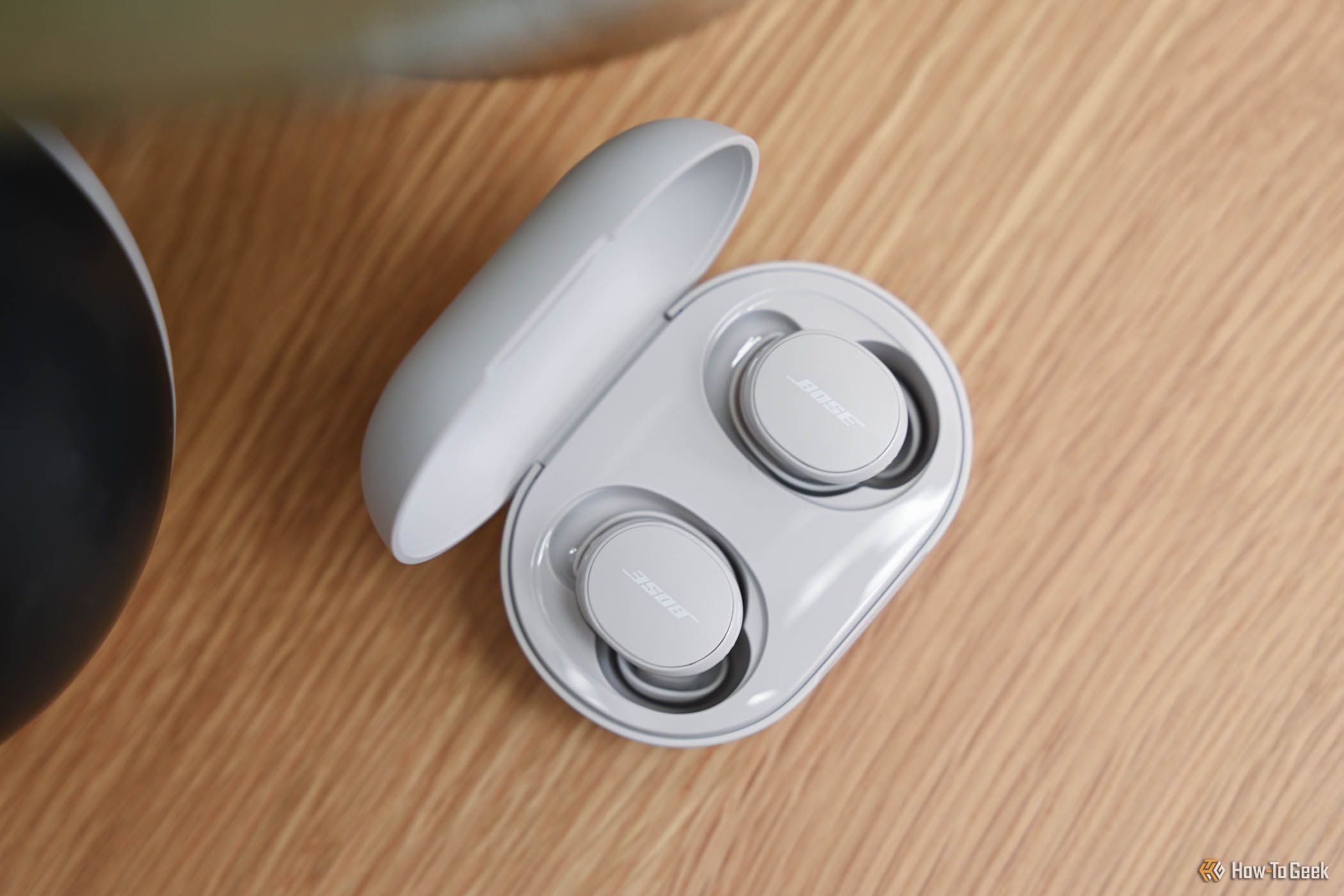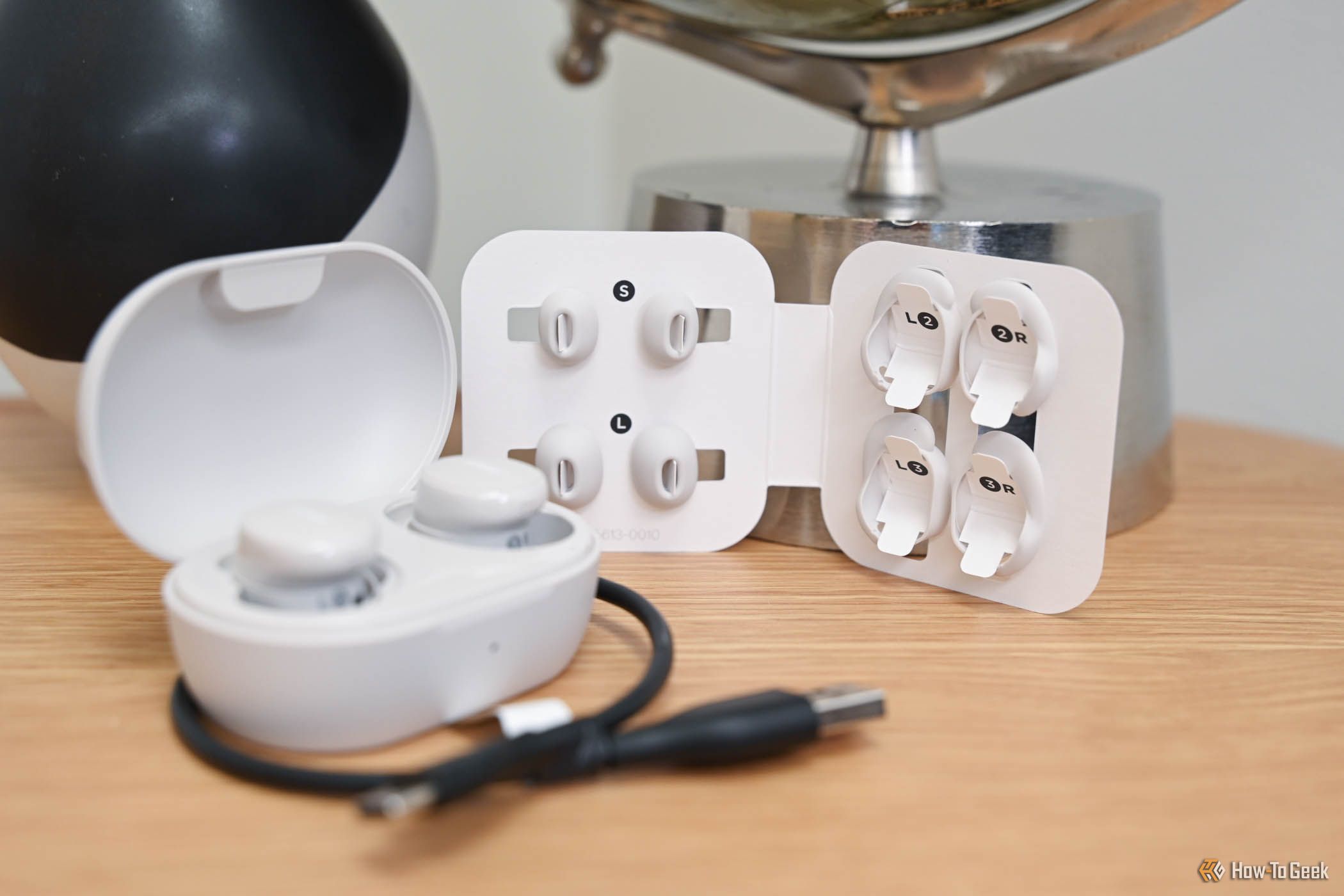Key Takeaways
- Bose QuietComfort Earbuds offer best-in-class ANC with a long battery life and a comfortable design.
- Bluetooth Multipoint, wireless charging, and other modern features are included.
- The charging case feels cheap, and call quality leaves a lot to be desired.
Bose has remained a leader in noise-canceling headphones, but its earbuds haven’t achieved the same level of popularity. That could change with the release of the 2024 QuietComfort Earbuds, a standout product that not only competes with but surpasses Apple’s AirPods Pro in several key areas.
For reference, the 2024 QuietComfort Earbuds are a follow-up to the 2022 QuietComfort Earbuds 2. I’m unsure why Bose went backward with the product name, but I figured I’d clear the air before jumping into the review.
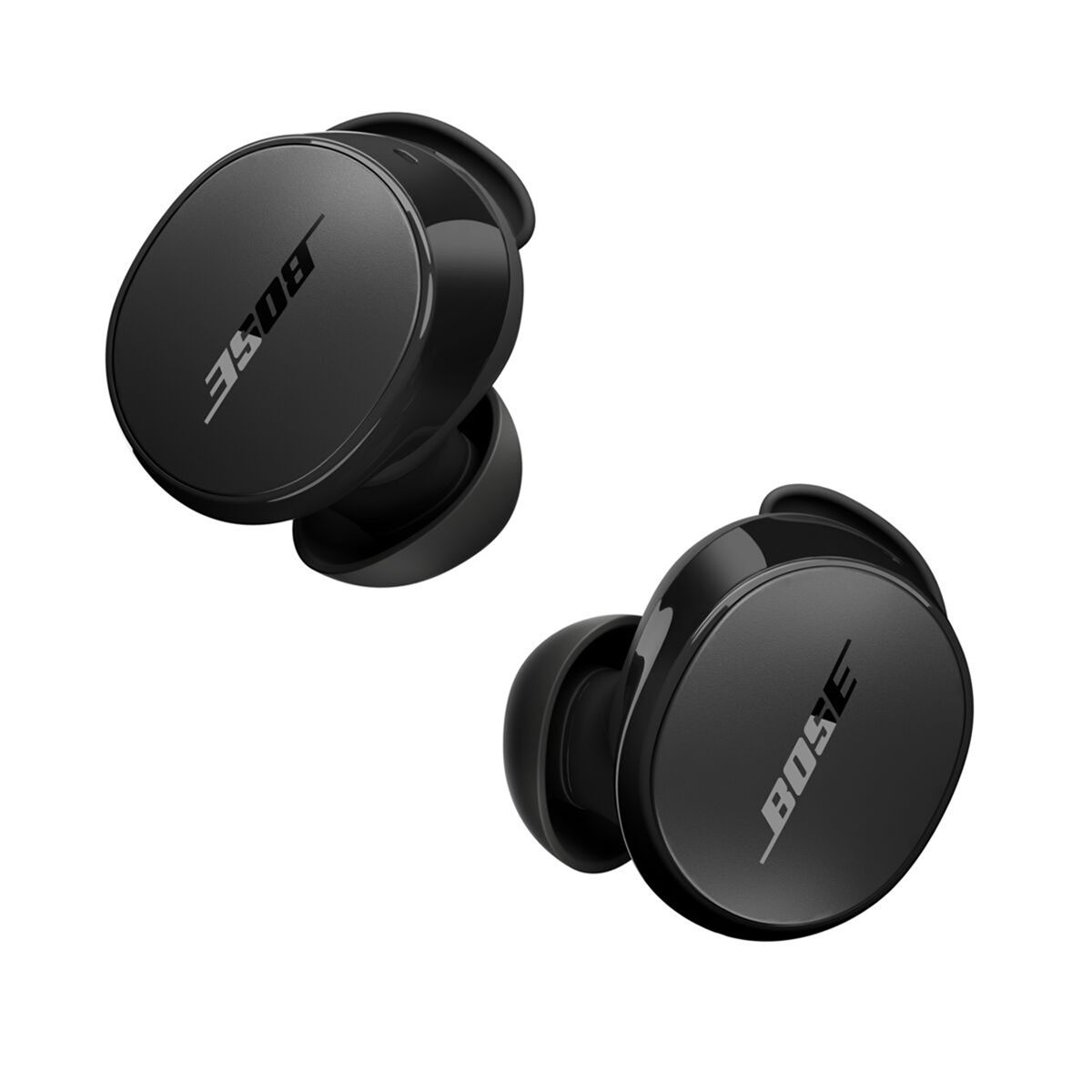
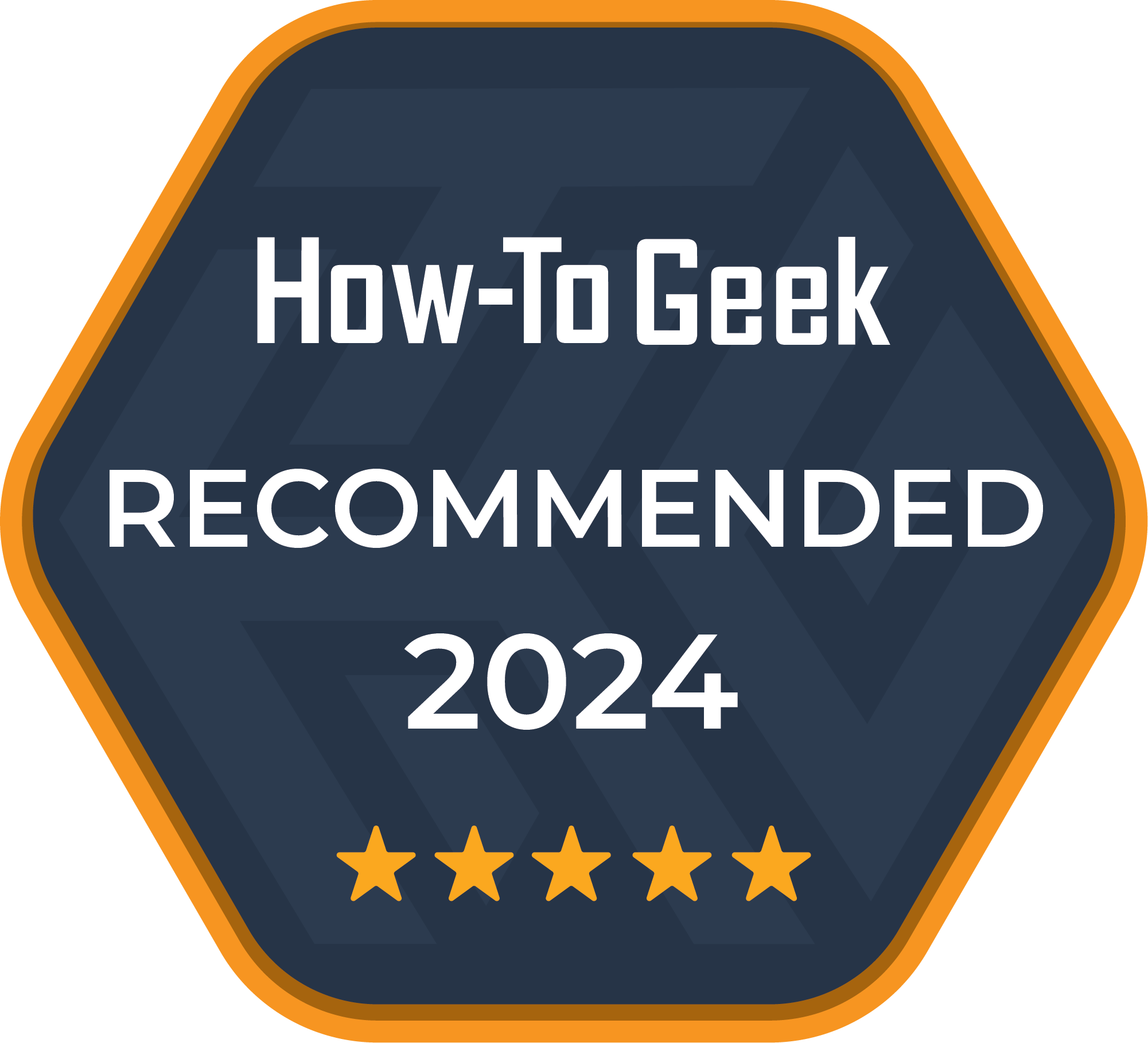
Bose QuietComfort Earbuds (2024)
Bose QuietComfort Earbuds (2024) offer best-in-class ANC, stellar sound quality, and a battery life that beats AirPods Pro. They’re an excellent option for anyone who values noise cancelation, though their charging case is a bit bulky, and they may not be the best choice for phone calls.
- Best-in-class ANC
- Total 30-hour battery life with ANC enabled
- Supports Bluetooth Multipoint and wireless charging
- Comfortable design
- Bulky, cheaply constructed charging case
- Occasional dropouts during phone calls
Price and Availability
The 2024 QuietComfort Earbuds are available for $179 at Amazon, Best Buy, B&H, and the Bose web store. They come in white, black, and lilac colorways.
Supreme Comfort, Acceptable Build Quality
These are some of the most comfortable earbuds I’ve ever worn. I’m not sure if it’s the oval-shaped eartips or the low-profile wingtips, but Bose nailed the design. I rarely need to adjust the QuietComfort Earbuds. They stay in my ears when I run, and I have no trouble napping with them—man, I really wish I had these on my last flight.
Everybody’s born with different ears. So, comfort can be subjective, and people with small ear canals tend to dislike earbuds with rubberized tips. However, the QuietComfort Earbuds don’t go that deep. They have a shallow shape that may be more accommodating for smaller ear canals.
As for build quality, the earbuds feel good and have a shiny plastic texture that’s easy to clean. They’ve also got an IPX4 splash-resistance rating. But the charging case—or, more specifically, the lid of the case—feels cheap. It has a matte texture, which is nice, but the plastic is thin, and the hinge has too much wobble. It’s not the end of the world; most earbud charging cases have a lousy lid. Still, this is an expensive product, so I’d prefer to see more attention to detail.
I also wish that the charging case was slimmer. It’s about twice the size of an AirPods case and has a bulbous shape that isn’t great for small or crowded pockets. To be fair, size is a tradeoff for battery life. The QuietComfort Earbuds last 8 hours with ANC enabled and can endure up to 30 hours with the charging case—they last longer than AirPods Pro, so they’re a better option for long-haul flights and road trips, especially if you’re using ANC as a sleep aid.
The charging case also supports wireless charging. It’s a feature that previous QuietComfort Earbuds lacked, so it’s worth a mention.
Smooth and Dynamic Sound
Like other Bose products, the QuietComfort Earbuds have a mild “smiley face” frequency response curve that gently accentuates treble and bass. They sound great to me. Kick drums and bass guitars are punchy but not exaggerated, while vocals have a nice mix of fullness and clarity. There’s a smoothness to the sound, too, which is presumably due to some heavy lifting in the sub-bass region and selective cutting of high frequencies.
The QuietComfort Earbuds also have a lot of dynamic range, which I greatly appreciate. Other earbuds aim for a more hyped and compressed that, while fun for exercising, can be too tiring for long listening sessions. That said, you may find yourself cranking up the volume to compensate for the QuietComfort Earbuds’ headroom, as the quiet parts of songs will genuinely sound quiet. As for the stereo soundstage—it’s wide but realistic, and that’s all I ask for.
I generally stuck with Bose’s default EQ setting, as it works well with most genres of music. Older, thinner records like Ahmad Jamal’s Poinciana are enhanced by the gentle bass boost, while newer pop tracks like Ari Lennox’s Pressure are just as fun and fresh as ever. Treble-heavy country tracks like Willie and Waylon’s I Can Get Off on You, which sound slightly painful on most of my speakers, benefit from Bose’s smoother sound profile. And I really enjoy listening to podcasts on these earbuds.
Setting up a custom EQ curve may be worthwhile if you only listen to one or two genres of music. Cranking the bass adds more thump to hip-hop tracks, for example, and old rock songs feel more true to life when you pull the sub-bass down. But I’m happy with the default setting, and I assume that most customers will feel the same way.
LDAC and aptX are absent from the QuietComfort Earbuds (though there is a low-latency mode for gaming). Lossless audio fans may be disappointed, but I couldn’t care less. These are wireless earbuds, not studio monitors or headphones. Any improvement offered by lossless audio would be minuscule or completely unnoticeable. Bose’s Immersive Audio system is also missing at launch, though it will be added in a future update.
Possibly the Best ANC at This Price
Bose did not invent active noise cancellation (ANC), but it was the first company to offer ANC in commercially available products. Unsurprisingly, Bose is still a top brand in the world of ANC, and this status is reflected in products like the new QuietComfort Earbuds.
The QuietComfort Earbuds offer best-in-class ANC, full stop. They’re on par with (or perhaps better than) the AirPods Pro and similarly-priced earbuds. Of course, the ANC quality falls ever-so-slightly below that of Bose’s QuietComfort Earbuds Ultra, but that’s to be expected.
I tested the QuietComfort Earbuds in several environments and was consistently impressed by their ANC performance. They silence the main road outside my home, pull voices down to almost inaudible levels, and defeat engine noise when sitting in the back of a car. The ANC also has almost no noticeable impact on sound quality, which is a plus.
Unfortunately, the QuietComfort Earbuds arrived at my door about two weeks after I took a long-haul flight, so I didn’t get to test them on a plane. But I had plenty of opportunities to perform my patented, super-scientific dishwasher test. Noise-canceling earbuds usually struggle with sharp, high-frequency noises, such as the sound of clinking silverware. Yet the QuietComfort Earbuds successfully softened these high-pitched noises as I haphazardly hand-washed dishes. (The key word being softened.)
Bose’s transparency mode, called Ambient Mode, also fared well while taking walks, cooking, and talking to friends. It brought in external noise without too much distortion or hissing. ANC is the star of the show, but the Ambient Mode is quite good.
Phone Calls Are a Weak Point
Call quality is one area where the QuietComfort Earbuds fail to impress. I took a few phone calls near a main road to test background noise cancelation and microphone quality—friends told me that my voice was clear with minimal background noise, but there were occasional audio dropouts. I assume that the noise-canceling algorithm is responsible for those dropouts, as the problem seemed to be less frequent when I made calls in quieter environments.
Dropouts aside, the microphone quality is on par with any other decent pair of wireless earbuds. The mics sound crisp but distant. They pick up a decent amount of detail, yet it’s hard to make out some words. There’s also a noticeable amount of digital distortion due to Bluetooth’s limited bandwidth. Wireless earbud microphones are the epitome of mediocre.
If call quality is your number-one priority, I suggest picking up a set of wired USB-C EarPods for $20. They offer substantially better microphone quality than any wireless earbuds I’ve ever tested. That said, those who regularly take calls from noisy or windy environments may be better off with the QuietComfort Earbuds, as Bose’s background noise cancelation will reduce the number of times that you need to repeat yourself (even with the occasional dropout).
A New App, Voice Control, and More
One thing that sets the QuietComfort Buds apart from its progenitors is its all-new app. Bose QCE, available for iPhone and Android, while stylistically similar to the old Bose Music app, offers a much deeper collection of features and settings.
The app features a series of small cards, each with an associated setting. One card allows you to adjust EQ, while another lets you customize the QuietComfort Earbuds’ touch controls. There’s a multipoint card (for multi-device connectivity), a smartphone voice assistant card, and a setting to toggle the low-latency gaming mode.
Bose Connect also contains two oddities—Voice Control and Remote Selfie. The Voice Control option, which may come in handy when washing the dishes or performing other chores, lets you control media playback and other settings through voice commands. You might say, “hey headphones, pause,” or “accept call,” for example.
Remote Selfie triggers your shutter while a camera app is open. It’s compatible with Voice Control, though it can also be assigned to touch controls on your earbuds. If you regularly use a remote camera shutter, then this might be a pretty neat idea, but it’s not something I have much use for.
My only complaint about the app is that it contains two links to the Bose website. There’s the “Bose” card on the home screen, which takes you to a shopping page, and a “Stories” tab at the bottom of the app that redirects to a Bose blog. I feel like these links are just taking up space.
Should You Buy the Bose QuietComfort Earbuds (2024)?
I’d gladly recommend the Bose QuietComfort Earbuds (2024) to anyone who wants best-in-class ANC, high-end audio quality, a great battery life, and a comfortable design. They might be the best earbuds in this price range, particularly for frequent fliers.
That said, there are a lot of compelling earbuds in this price range. Choosing between the QuietComfort Buds and a similarly-priced option, such as the AirPods Pro or Sennheiser Momentum, is really a matter of taste. AirPods Pro might fit better in your pocket and offer a rich experience on iPhone, but the QuietComfort earbuds have a longer battery life and are platform-agnostic, and so on.


Bose QuietComfort Earbuds (2024)
Bose QuietComfort Earbuds (2024) offer best-in-class ANC, stellar sound quality, and a battery life that beats AirPods Pro. They’re an excellent option for anyone who values noise cancelation, though their charging case is a bit bulky, and they may not be the best choice for phone calls.


